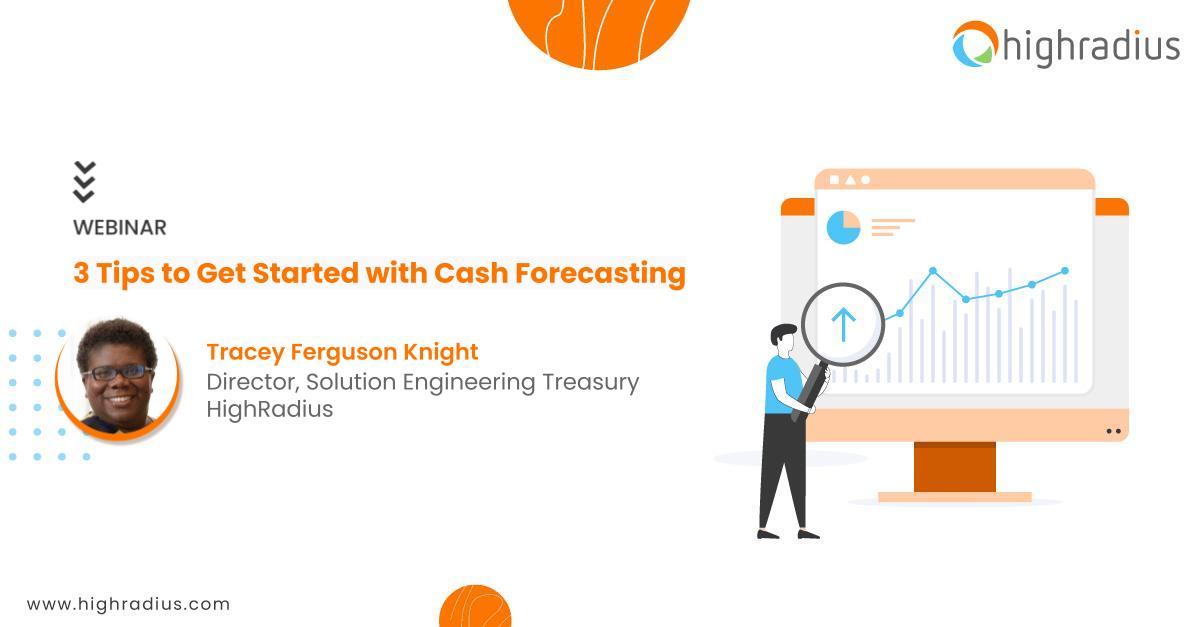3 Tips to Get Started with Cash Forecasting
What you’ll learn
- Understand why the purpose of cash forecasting varies for companies.
- Learn the role of technology in refining the four drivers of cash forecasting.
Tip #1: Understanding the purpose of cash forecast
Net debtors vs Net investors Companies might have different priorities based on their cash position. Net debtors need to delay payables and draw on their lines of credit carefully since their motive is to stay solvent, whereas net investors need to find initiatives to acquire new businesses or expand their own businesses. The purpose of cash forecasting needs to be aligned with the company goals. Owing to their needs and priorities, net debtors need to create cash forecasts with high accuracy and frequency. Meanwhile, net investors can do with reasonable accuracy and frequency in forecasts.Tip #2: Driving accuracy to meet forecasting purpose
Most companies find Accounts Receivable and Accounts Payable as the most complex categories to forecast since they have a lot of unpredictability. But suitable models and algorithms enhance accuracy even for complex cash flow categories.
Four drivers to boost accuracy
- Approach:Rolling up forecasts from low-level forecasts such as entity, company code, country, and currency drive visibility.
- Data Gathering:
Automating data gathering from various sources such as banks, ERPs, TMS, FP&A tools, and Payroll, A/R, and A/P teams through API integration, imports and exports, etc. - Modeling: Using specialized models for every cash flow category. For instance, for complex categories, utilize AI models to build short-term and long-term forecasts and heuristic models for simpler cash flow categories such as payroll, taxes, etc.
-
Variance Analysis:
Comparing forecasts to actuals for various periods: daily, weekly, quarterly, etc. to build more accurate forecasts. This results in better reporting to CFOs for them to make confident data-driven decisions.
Without automation, the four drivers become tedious and difficult, and rinse and repeat become impossible.
Tip #3: Using a robust and scalable technology
Automation makes cash forecasting faster and technologies such as Artificial Intelligence improve accuracy.
These are the various technologies that enable automation:
-
- API: Seamlessly integrates various applications from banks, ERPs, etc.
- RPA: Processes repetitive and manual tasks by referring to historical data.
- Data Lake: Stores data in a single place for easy data access.
- BI/ Dashboard: Interprets data visually in the form of graphs to analyze data easily.
Investing in a scalable, extensible, and flexible technology or partnering with the right solution provider has far-reaching benefits in refining the end-to-end process of cash forecasting.
There's no time like the present
Get a Demo of Integrated Receivables Platform for Your Business
Request a Demo
HighRadius Integrated Receivables Software Platform is the world's only end-to-end accounts receivable software platform to lower DSO and bad-debt, automate cash posting, speed-up collections, and dispute resolution, and improve team productivity. It leverages RivanaTM Artificial Intelligence for Accounts Receivable to convert receivables faster and more effectively by using machine learning for accurate decision making across both credit and receivable processes and also enables suppliers to digitally connect with buyers via the radiusOneTM network, closing the loop from the supplier accounts receivable process to the buyer accounts payable process. Integrated Receivables have been divided into 6 distinct applications: Credit Software, EIPP Software, Cash Application Software, Deductions Software, Collections Software, and ERP Payment Gateway - covering the entire gamut of credit-to-cash.




